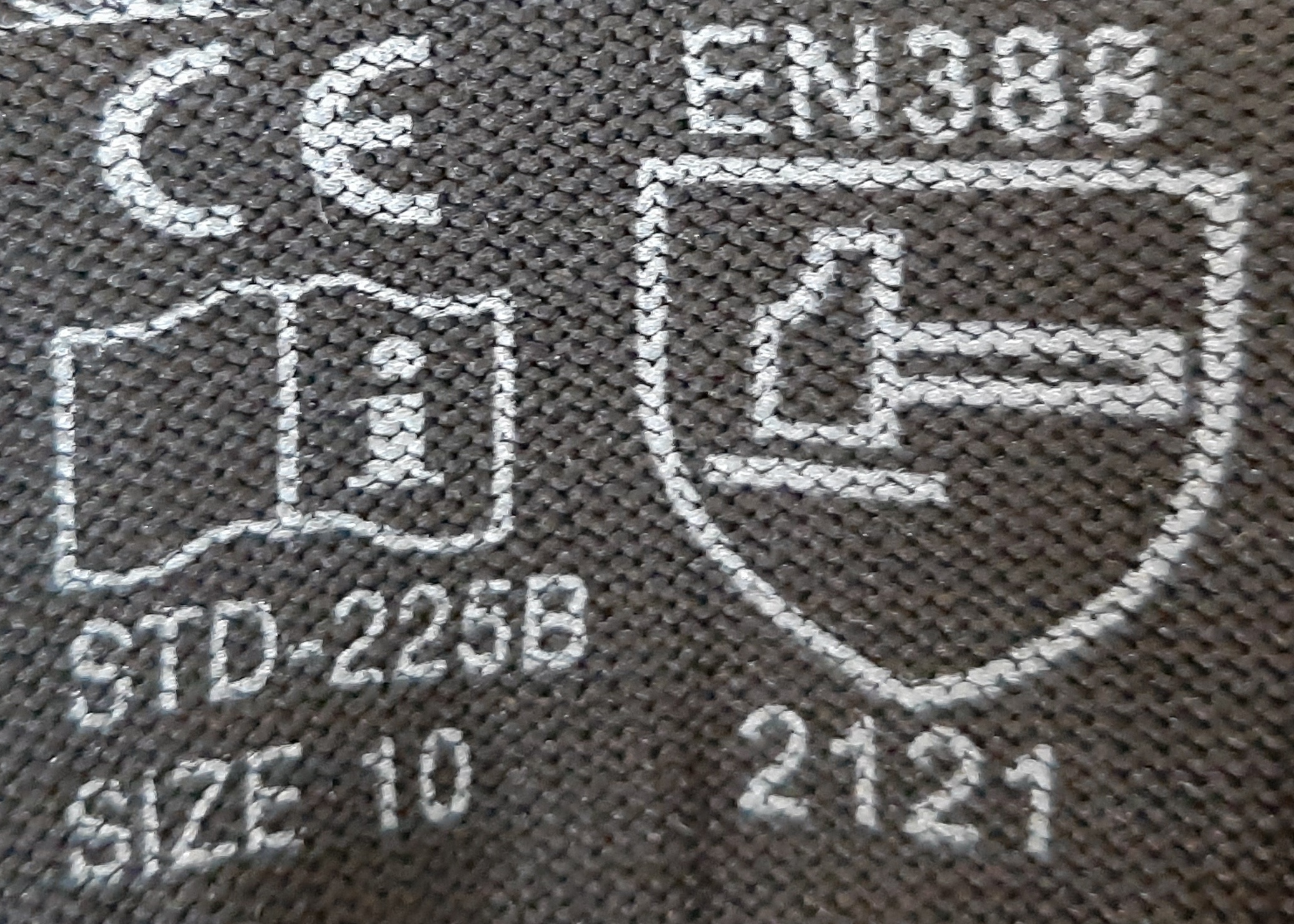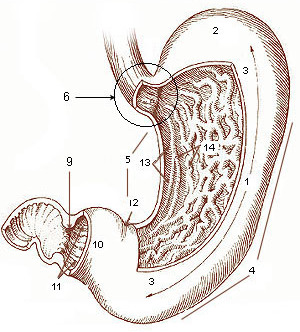|
Gastric Balloon
A gastric balloon, also known as an intragastric balloon (IGB) or a stomach balloon, is an inflatable medical device that is temporarily placed into the stomach to help reduce weight. It is designed to help provide weight loss when diet and exercise have failed and surgery is not wanted by or recommended for the patient. Medical uses Intragastric balloons are an alternative to bariatric surgery (or weight loss surgery), which is not generally offered to patients with a body mass index of less than 35. Gastric balloons are also designed for patients who require weight-loss support but who do not want to commit to surgical interventions.Jamal, M.H., Almutairi, R., Elabd, R. et al. The Safety and Efficacy of Procedureless Gastric Balloon: a Study Examining the Effect of Elipse Intragastric Balloon Safety, Short and Medium Term Effects on Weight Loss with 1-Year Follow-Up Post-removal. OBES SURG 29, 1236–1241 (2019). https://doi.org/10.1007/s11695-018-03671-w Intragastric balloon ... [...More Info...] [...Related Items...] OR: [Wikipedia] [Google] [Baidu] |
Medical Device
A medical device is any device intended to be used for medical purposes. Significant potential for hazards are inherent when using a device for medical purposes and thus medical devices must be proved safe and effective with reasonable assurance before regulating governments allow marketing of the device in their country. As a general rule, as the associated risk of the device increases the amount of testing required to establish safety and efficacy also increases. Further, as associated risk increases the potential benefit to the patient must also increase. Discovery of what would be considered a medical device by modern standards dates as far back as in Baluchistan where Neolithic dentists used flint-tipped drills and bowstrings. Study of Archaeology, archeology and Roman medical literature also indicate that many types of medical devices were in widespread use during the time of ancient Rome. In the United States it was not until the Federal Food, Drug, and Cosmetic Act ( ... [...More Info...] [...Related Items...] OR: [Wikipedia] [Google] [Baidu] |
Stomach
The stomach is a muscular, hollow organ in the upper gastrointestinal tract of Human, humans and many other animals, including several invertebrates. The Ancient Greek name for the stomach is ''gaster'' which is used as ''gastric'' in medical terms related to the stomach. The stomach has a dilated structure and functions as a vital organ in the digestive system. The stomach is involved in the gastric phase, gastric phase of digestion, following the cephalic phase in which the sight and smell of food and the act of chewing are stimuli. In the stomach a chemical breakdown of food takes place by means of secreted digestive enzymes and gastric acid. It also plays a role in regulating gut microbiota, influencing digestion and overall health. The stomach is located between the esophagus and the small intestine. The pyloric sphincter controls the passage of partially digested food (chyme) from the stomach into the duodenum, the first and shortest part of the small intestine, where p ... [...More Info...] [...Related Items...] OR: [Wikipedia] [Google] [Baidu] |
Weight Reduction
Weight loss, in the context of medicine, health, or physical fitness, refers to a reduction of the total body mass, by a mean loss of fluid, body fat (adipose tissue), or lean mass (namely bone mineral deposits, muscle, tendon, and other connective tissue). Weight loss can either occur unintentionally because of malnourishment or an underlying disease, or from a conscious effort to improve an actual or perceived overweight or obese state. "Unexplained" weight loss that is not caused by reduction in calorific intake or increase in exercise is called cachexia and may be a symptom of a serious medical condition. Intentional Intentional weight loss is the loss of total body mass as a result of efforts to improve fitness and health, or to change appearance through slimming. Weight loss is the main treatment for obesity, and there is substantial evidence this can prevent progression from prediabetes to type 2 diabetes with a 7–10% weight loss and manage cardiometabolic healt ... [...More Info...] [...Related Items...] OR: [Wikipedia] [Google] [Baidu] |
Bariatric Surgery
Bariatric surgery (also known as metabolic surgery or weight loss surgery) is a surgical procedure used to manage obesity and obesity-related conditions. Long term weight loss with bariatric surgery may be achieved through alteration of gut hormones, physical reduction of stomach size (stomach reduction surgery), reduction of nutrient absorption, or a combination of these. Standard treatment, Standard of care procedures include Gastric bypass surgery#Variations, Roux en-Y bypass, sleeve gastrectomy, and Duodenal switch, biliopancreatic diversion with duodenal switch, from which weight loss is largely achieved by altering gut hormone levels responsible for hunger and satiety, leading to a new hormonal weight Set point theory, set point. In morbidly obese people, bariatric surgery is the most effective treatment for weight loss and reducing complications. A 2021 meta-analysis found that bariatric surgery was associated with reduction in Mortality rate, all-cause mortality among o ... [...More Info...] [...Related Items...] OR: [Wikipedia] [Google] [Baidu] |
Body Mass Index
Body mass index (BMI) is a value derived from the mass (Mass versus weight, weight) and height of a person. The BMI is defined as the human body weight, body mass divided by the square (algebra), square of the human height, body height, and is expressed in Units of measurement, units of kg/m2, resulting from mass in kilograms (kg) and height in metres (m). The BMI may be determined first by measuring its components by means of a weighing scale and a stadiometer. The multiplication and division may be carried out directly, by hand or using a calculator, or indirectly using a lookup table (or chart). The table displays BMI as a function of mass and height and may show other units of measurement (converted to Metric system, metric units for the calculation). The table may also show contour lines or colours for different BMI categories. The BMI is a convenient rule of thumb used to broadly categorize a person as based on tissue mass (muscle, fat, and bone) and height. Major adult B ... [...More Info...] [...Related Items...] OR: [Wikipedia] [Google] [Baidu] |
Endoscopy
An endoscopy is a procedure used in medicine to look inside the body. The endoscopy procedure uses an endoscope to examine the interior of a hollow organ or cavity of the body. Unlike many other medical imaging techniques, endoscopes are inserted directly into the organ. There are many types of endoscopies. Depending on the site in the body and type of procedure, an endoscopy may be performed by a doctor or a surgeon. During the procedure, a patient may be fully conscious or anaesthesia, anaesthetised. Most often, the term ''endoscopy'' is used to refer to an examination of the upper part of the human gastrointestinal tract, gastrointestinal tract, known as an esophagogastroduodenoscopy. Similar instruments are called borescopes for nonmedical use. History Adolf Kussmaul was fascinated by sword swallowers who would insert a sword down their throat without gagging. This drew inspiration to insert a hollow tube for observation; the next problem to solve was how to shine light th ... [...More Info...] [...Related Items...] OR: [Wikipedia] [Google] [Baidu] |
Bowel Obstruction
Bowel obstruction, also known as intestinal obstruction, is a mechanical or Ileus, functional obstruction of the Gastrointestinal tract#Lower gastrointestinal tract, intestines which prevents the normal movement of the products of digestion. Either the Small intestine, small bowel or Large intestine, large bowel may be affected. Signs and symptoms include abdominal pain, vomiting, abdominal bloating, bloating and not passing flatulence, gas. Mechanical obstruction is the cause of about 5 to 15% of cases of acute abdomen, severe abdominal pain of sudden onset requiring admission to hospital. Causes of bowel obstruction include Adhesion (medicine), adhesions, hernias, volvulus, endometriosis, inflammatory bowel disease, appendicitis, Neoplasm, tumors, diverticulitis, ischemic colitis, ischemic bowel, tuberculosis and intussusception (medical disorder), intussusception. Small bowel obstructions are most often due to adhesions and hernias while large bowel obstructions are most oft ... [...More Info...] [...Related Items...] OR: [Wikipedia] [Google] [Baidu] |
Food And Drug Administration
The United States Food and Drug Administration (FDA or US FDA) is a List of United States federal agencies, federal agency of the United States Department of Health and Human Services, Department of Health and Human Services. The FDA is responsible for protecting and promoting public health through the control and supervision of food safety, tobacco products, caffeine products, dietary supplements, Prescription drug, prescription and Over-the-counter drug, over-the-counter pharmaceutical drugs (medications), vaccines, biopharmaceuticals, blood transfusions, medical devices, electromagnetic radiation emitting devices (ERED), cosmetics, Animal feed, animal foods & feed and Veterinary medicine, veterinary products. The FDA's primary focus is enforcement of the Federal Food, Drug, and Cosmetic Act (FD&C). However, the agency also enforces other laws, notably Section 361 of the Public Health Service Act as well as associated regulations. Much of this regulatory-enforcement work is ... [...More Info...] [...Related Items...] OR: [Wikipedia] [Google] [Baidu] |
Outpatient Surgery
Outpatient surgery, also known as ambulatory surgery, day surgery, day case surgery, or same-day surgery, is surgery that does not require an overnight hospital stay.The International Association for Ambulatory Surgery (IAAS) would not consider all of these terms synonymous. In a 2003 documen"Ambulatory (day) surgery: suggested international terminology and definitions" the IAAS recommends defining an "outpatient" procedure as one "carried out in the outpatient department of a hospital" and an "ambulatory" procedure as one "excluding an office/surgery or outpatient operation/procedure, where the patient is discharged on the same working day." That is, "ambulatory surgery" occurs in an "ambulatory surgery center." The term “outpatient” arises from the fact that surgery patients may enter and leave the facility on the same day. The advantages of outpatient surgery over inpatient surgery include greater convenience and reduced costs. Outpatient surgery may occur in an inpatient fa ... [...More Info...] [...Related Items...] OR: [Wikipedia] [Google] [Baidu] |
CE Marking
The presence of the logo on Product (business), commercial products indicates that the Manufacturing, manufacturer or importer affirms the goods' conformity with European Environment, health and safety, health, safety, and environmental protection Technical standard, standards. It is not a quality indicator or a certification mark. The CE marking is required for goods sold in the European Economic Area (EEA); goods sold elsewhere may also carry the mark. The mark indicates that the product may be traded freely in any part of the European Economic Area, regardless of its country of origin. It consists of the CE logo and, if applicable, the four digit identification number of the notified body involved in the conformity assessment procedure. Meaning The mark on a product indicates that the manufacturer or importer of that product affirms its compliance with the relevant European Union law, EU legislation and the product may be sold anywhere in the European Economic Area (EEA) ... [...More Info...] [...Related Items...] OR: [Wikipedia] [Google] [Baidu] |
Pylorus
The pylorus ( or ) connects the stomach to the duodenum. The pylorus is considered as having two parts, the ''pyloric antrum'' (opening to the body of the stomach) and the ''pyloric canal'' (opening to the duodenum). The ''pyloric canal'' ends as the ''pyloric orifice'', which marks the junction between the stomach and the duodenum. The orifice is surrounded by a sphincter, a band of muscle, called the ''pyloric sphincter''. The word ''pylorus'' comes from Greek πυλωρός, via Latin. The word ''pylorus'' in Greek means "gatekeeper", related to "gate" () and is thus linguistically related to the word " pylon". Structure The pylorus is the furthest part of the stomach that connects to the duodenum. It is divided into two parts, the ''antrum'', which connects to the body of the stomach, and the ''pyloric canal'', which connects to the duodenum. Antrum The antrum also called the ''gastric antrum'' or the ''pyloric antrum'' is the initial portion of the pyloric region. ... [...More Info...] [...Related Items...] OR: [Wikipedia] [Google] [Baidu] |






